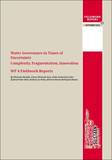|
One of the major uncertainties of our era is to what extent and how anthropogenic climate change will affect ecosystems and livelihoods. Given the vast concentration of urban poor in low elevation coastal zones and hillsides susceptible to landslides, many cities in the South are considered particularly at risk. In some cities natural hazards such as droughts will reduce the amount of water available, while in other cities an increase in the number of storms or flood events, where intense flows of water enter the city system very rapidly, and an increase in annual rainfall will intensify the need to capture and manage water in a sustainable and safe manner. Various cities will probably have to face both prolonged periods of droughts in one season and more intense rainfall in another. In some cases different scenarios even predict very different trends. What is evident is that many of the plausible effects of climate change impact water availability, which in turn impacts energy provision in some cities whereas in others it does not. Water is thus one of the primary media through which climate change will impact daily existence and ecosystems (Heath, Parker et al. 2012:619). Yet, as Pelling has recently argued: because of the scalar and temporal nature of climate change and its effects, it is still invisible in and dissociated from everyday life, yet increasingly formative of it. This is a challenge of alienation and separation. There is an existential gap between what can be done to confront the climate change challenges, and what culture and society determine as reasonable and proper to do (Pelling, Manuel-Navarrete et al. 2012:13).
Read the full Fieldwork Report
|
Recent Chance2Sustain Publications |
|
|
|
|
|

